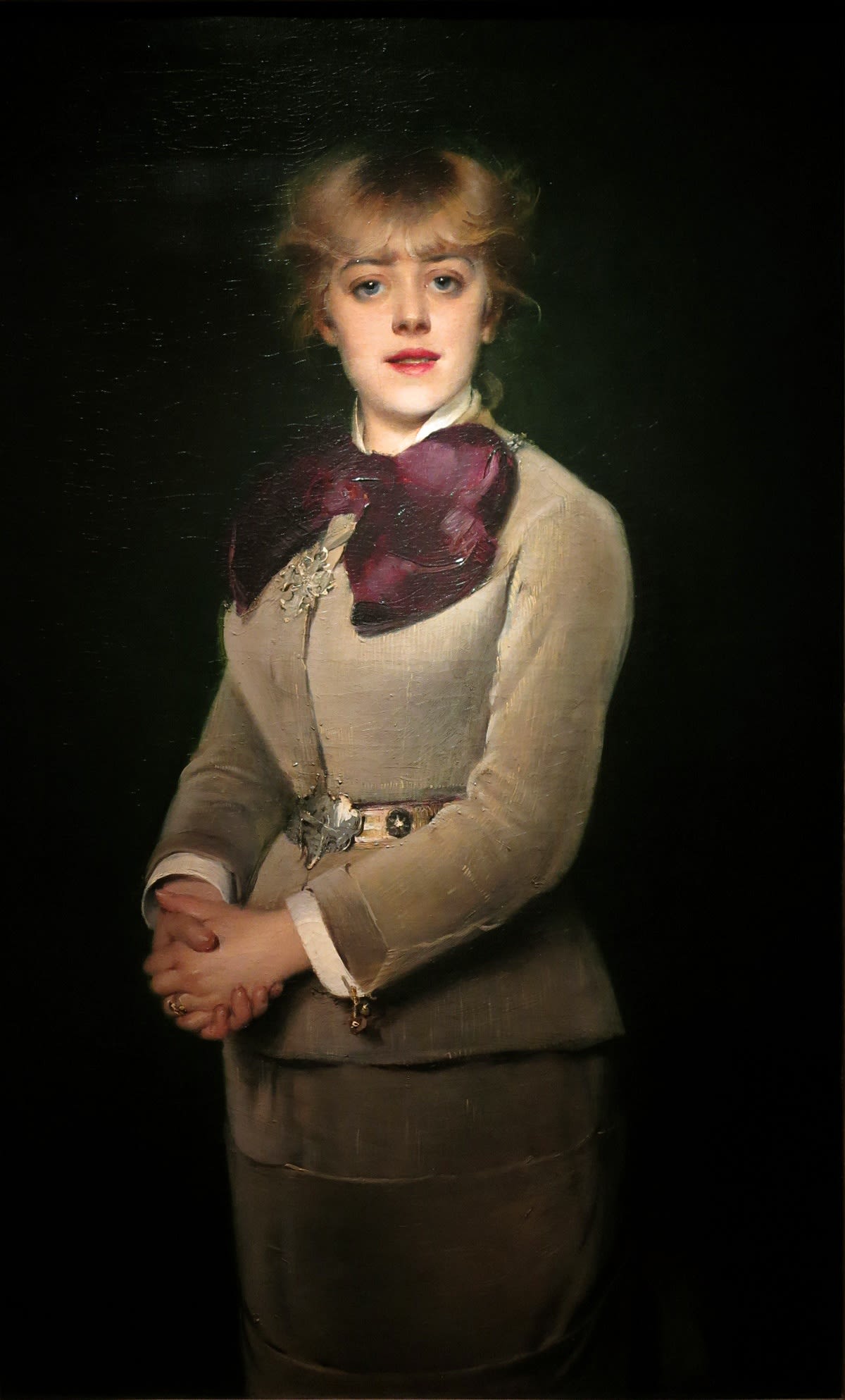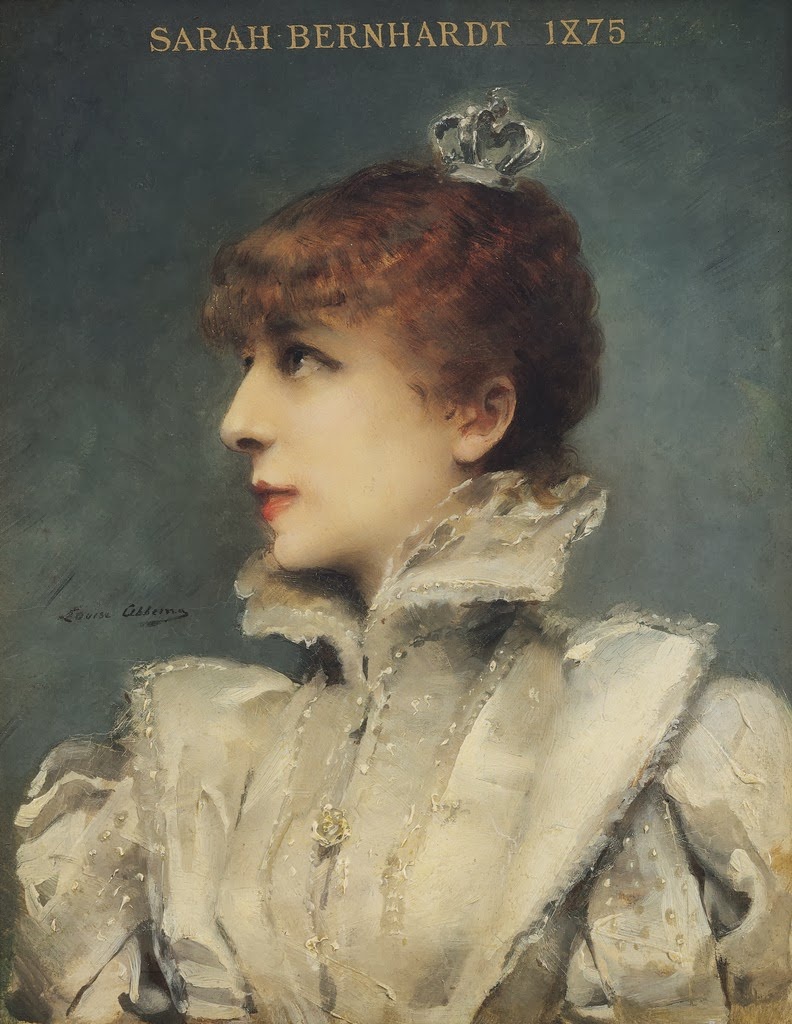Louise Abbéma (1853 - 1927)
Portrait of a young Egyptian boy wearing a fez, in profile
Signed, dated and located upper right: Caire (1889) / Louise Abbema
Oil on panel
27.1 x 21.4 cm. (10 ¾ x 8 ½ in.)
Portrait of a young Egyptian boy wearing a fez, in profile
Signed, dated and located upper right: Caire (1889) / Louise Abbema
Oil on panel
27.1 x 21.4 cm. (10 ¾ x 8 ½ in.)
Though executed with a vivacity and zest typical of Louise Abbéma, this profile portrait of an Egyptian boy in a fez is unique within the artist’s oeuvre, since it seems that Abbéma painted no other Orientalist pictures. Furthermore, the inscription ‘Caire’ is intriguing, given that Abbéma is not known to have travelled to Egypt.
Very likely therefore the work relates to Sarah Bernhardt’s international tour of 1888-89. The celebrated actress, who was the life-partner of Abbéma, arrived in Cairo in late December 1888 by way of Istanbul. The Egyptian leg of her journey was a sensation and the actress performed many of her most famous plays in the Cairo Opera House to massive acclaim. As there is no evidence that Abbéma accompanied the actress to North Africa, the portrait is perhaps based on a photograph or a postcard that Bernhardt brought back with her, or which Abbéma found in Paris and used to commemorate Bernhardt’s tour. That said, it should not be entirely discounted that the portrait is from life, in which case Abbéma might have employed a model.
The face of the boy is beautifully rendered, from the soft lips to the delicate eyelashes, and the glint of light on his forehead, and his profile has been placed against a hazy background of pastel pinks and blues, suggestive of a dusky evening glow. Abbéma’s virtuosity is on show throughout, though above all in the boy’s vibrant robe, sketched out with spontaneous-seeming impasto brushwork in Impressionist hues.

Fig. 1, Louise Abbéma, Portrait of Jeanne Samaray,
1879, oil on canvas, 124 x 84 cm, Musée Carnavalet
Abbéma was born to a wealthy and aristocratic family with links to Parisian artistic circles. From a young age her father, viscount Émile Abbéma, encouraged his daughter’s painterly ambitions. She began studying with the history painter Louis Devedeux, before moving into the studios of Charles Chaplin and Carolus-Duran at the age of fifteen. Though picking up stylistic and tonal elements from these two important salon painters (fig. 1), Abbéma quickly developed her own highly individual idiom and by the late 19th century was one of the best-known French artists of her time, exhibiting regularly at the Salon from 1874 to 1926, as well as being nominated ‘Official Painter of the Third Republic’ and receiving the ‘Legion d’Honneur’ in 1906. Crediting Rosa Bonheur as a major source of inspiration, Abbéma would equal the celebrated animal painter in terms of her public success and adulation.
Abbéma met Sarah Bernhardt in 1871 when the actress was already renowned, and the two would remain life-long confidants and romantic partners. In 1875 Abbéma painted her first portrait of Bernhardt (fig. 2), which she showed at the Paris Salon of that year. It was an instant success, propelling the young painter into the limelight alongside her famous subject. From then onwards, Abbéma became Bernhardt’s official portraitist and received a flood of commissions from wealthy and fashionable clientele. Brash, confidant, cigar-smoking and dressed in men’s clothing, it was Abbéma’s flamboyant and unconventional behaviour, as much as her art, which brought her such wide acclaim.

Fig. 2, Louise Abbéma, Portrait of Sarah Bernhardt,
1875, oil on panel, 28 x 23 cm, Musée Carnavalet
